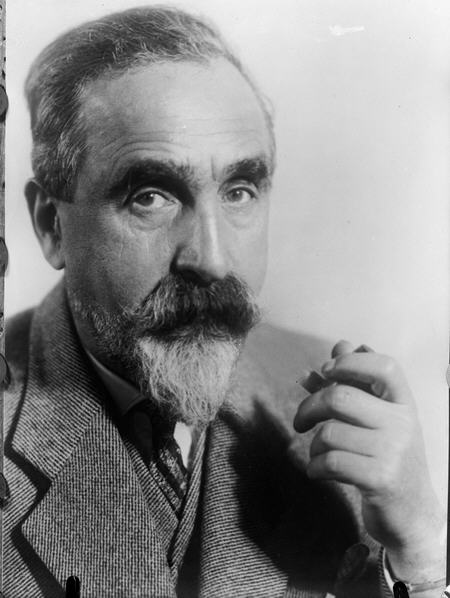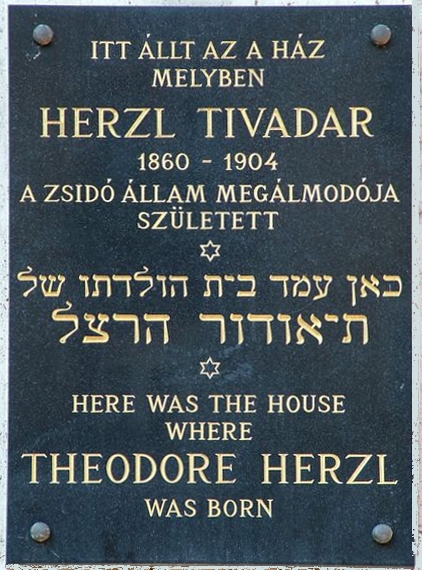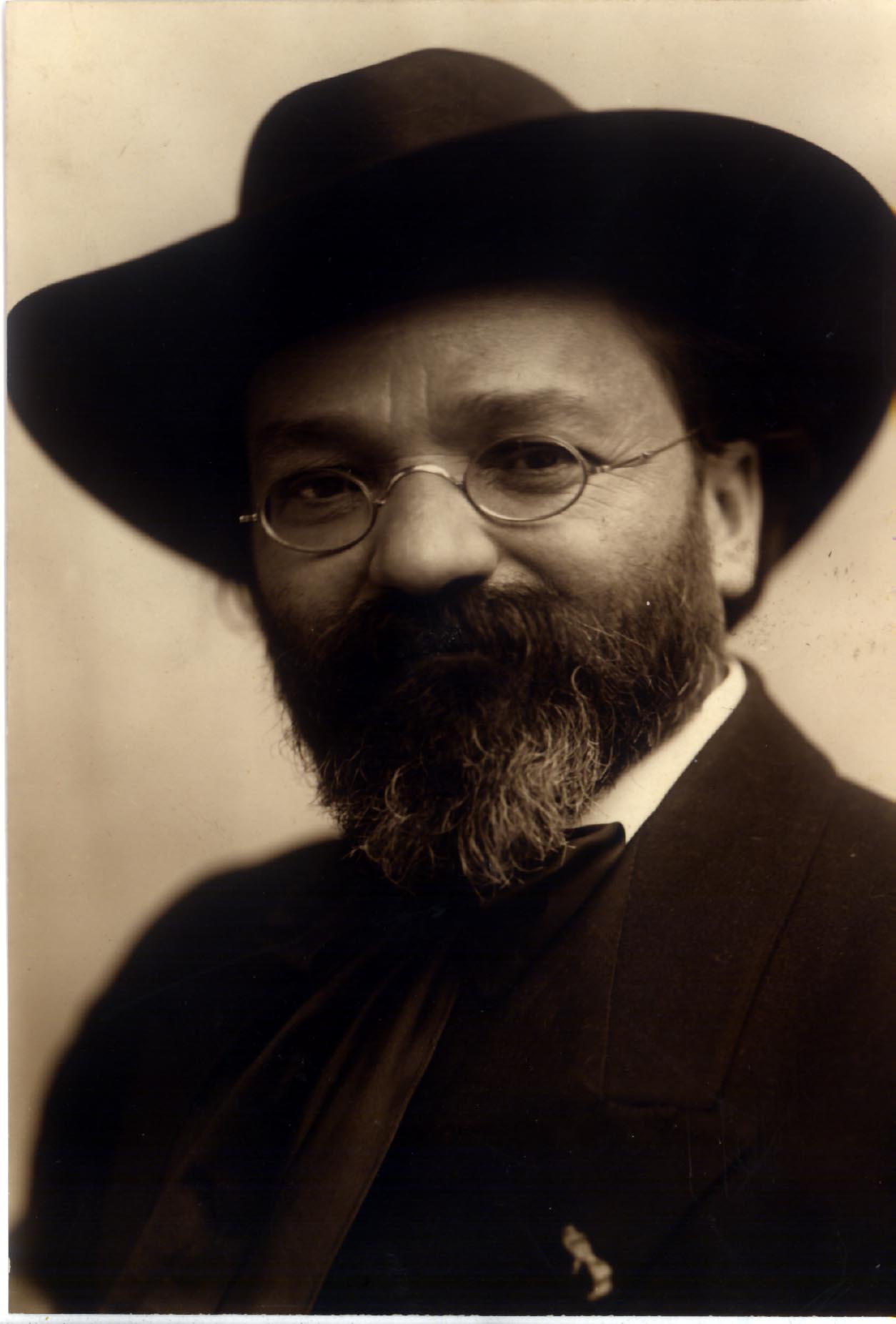|
Hermann Struck
Hermann Struck (6 March 1876 – 11 January 1944) was a German Jewish artist known for his etchings. Biography Hermann Struck (Chaim Aaron ben David) was born in Berlin. He studied at the Berlin Academy of Fine Arts. In 1904, he joined the modern art movement known as the Berlin Secession. In 1900, Struck met Jozef Israëls, a Dutch artist, who became his mentor. Both were recognized as leading artists of their time."Here and There" Smadar Sheffi, ''Haaretz Guide'', March 7, 2008, review of Herman Struck retrospective: Master Print Maker,Open Museum, Tefen Industrial Park, Israel In 1908, Struck published "Die Kunst des Radierens" ("The Art of Etching"), which became a seminal work on the subject. It was a textbook that offered both theory and practical instruction. Struck's students included Marc Chagall, Lovis Corinth, Jacob Steinhardt, Lesser Ury and Max Liebermann. In 1899, upon completing his studies at the Berlin Academy, he was banned from teaching there because he was ... [...More Info...] [...Related Items...] OR: [Wikipedia] [Google] [Baidu] |
Theodor Herzl
Theodor Herzl; hu, Herzl Tivadar; Hebrew name given at his brit milah: Binyamin Ze'ev (2 May 1860 – 3 July 1904) was an Austro-Hungarian Jewish lawyer, journalist, playwright, political activist, and writer who was the father of modern political Zionism. Herzl formed the Zionist Organization and promoted Jewish immigration to Palestine in an effort to form a Jewish state. Although he died before Israel's establishment, he is known in Hebrew as (), . Herzl is specifically mentioned in the Israeli Declaration of Independence and is officially referred to as "the spiritual father of the Jewish State", Israel Ministry of Foreign Affairs, ''Declaration of Establishment of State of Israel'/ref> i.e. the 'visionary' who gave a concrete, practicable platform and framework to political Zionism. However, he was not the first Zionist theoretician or activist; scholars, many of them religious such as rabbis Yehuda Bibas, Zvi Hirsch Kalischer and Judah Alkalai, promoted a range of ... [...More Info...] [...Related Items...] OR: [Wikipedia] [Google] [Baidu] |
Jewish Museum (Manhattan)
The Jewish Museum is an art museum and repository of cultural artifacts, housed at 1109 Fifth Avenue, in the former Felix M. Warburg House, along Museum Mile on the Upper East Side of Manhattan, New York City. The first Jewish museum in the United States, as well as the oldest existing Jewish museum in the world, it contains the largest collection of art and Jewish culture excluding Israeli museums, more than 30,000 objects. While its collection was established in 1904 at the Jewish Theological Seminary of America, the museum did not open to the public until 1947 when Felix Warburg's widow sold the property to the Seminary. It focuses both on artifacts of Jewish history and on modern and contemporary art. The museum's collection exhibition, ''Scenes from the Collection'', is supplemented by multiple temporary exhibitions each year. History The collection that seeded the museum began with a gift of Jewish ceremonial art objects from Judge Mayer Sulzberger to the Jewish Theolo ... [...More Info...] [...Related Items...] OR: [Wikipedia] [Google] [Baidu] |
Brooklyn Museum
The Brooklyn Museum is an art museum located in the New York City borough of Brooklyn. At , the museum is New York City's second largest and contains an art collection with around 1.5 million objects. Located near the Prospect Heights, Crown Heights, Flatbush, and Park Slope neighborhoods of Brooklyn, the museum's Beaux-Arts building was designed by McKim, Mead and White. The Brooklyn Museum was founded in 1898 as a division of the Brooklyn Institute of Arts and Sciences and was planned to be the largest art museum in the world. The museum initially struggled to maintain its building and collection, only to be revitalized in the late 20th century, thanks to major renovations. Significant areas of the collection include antiquities, specifically their collection of Egyptian antiquities spanning over 3,000 years. European, African, Oceanic, and Japanese art make for notable antiquities collections as well. American art is heavily represented, starting at the Colonial period. A ... [...More Info...] [...Related Items...] OR: [Wikipedia] [Google] [Baidu] |
Haifa
Haifa ( he, חֵיפָה ' ; ar, حَيْفَا ') is the third-largest city in Israel—after Jerusalem and Tel Aviv—with a population of in . The city of Haifa forms part of the Haifa metropolitan area, the third-most populous metropolitan area in Israel. It is home to the Baháʼí Faith's Baháʼí World Centre, and is a UNESCO World Heritage Site and a destination for Baháʼí pilgrimage. Built on the slopes of Mount Carmel, the settlement has a history spanning more than 3,000 years. The earliest known settlement in the vicinity was Tell Abu Hawam, a small port city established in the Late Bronze Age (14th century BCE). Encyclopedia Judaica, ''Haifa'', Keter Publishing, Jerusalem, 1972, vol. 7, pp. 1134–1139 In the 3rd century CE, Haifa was known as a dye-making center. Over the millennia, the Haifa area has changed hands: being conquered and ruled by the Canaanites, Israelites, Phoenicians, Assyrians, Babylonians, Persians, Hasmoneans, Romans, Byzantines, ... [...More Info...] [...Related Items...] OR: [Wikipedia] [Google] [Baidu] |
Tel Aviv Museum Of Art
Tel Aviv Museum of Art ( he, מוזיאון תל אביב לאמנות ''Muzeon Tel Aviv Leomanut'') is an art museum in Tel Aviv, Israel. The museum is dedicated to the preservation and display of modern and contemporary art from Israel and around the world. History The Tel Aviv Museum of Art was established in 1932 in a building that was the home of Tel Aviv's first mayor, Meir Dizengoff. The Helena Rubinstein Pavilion for Contemporary Art opened in 1959. Planning for a new building began in 1963 when the museum's collections of modern and contemporary art began to outgrow the premises. Construction commenced in 1966 but stopped for two years due to shortage of funds. The new museum moved to its current location on King Saul Avenue in 1971. Another wing was added in 1999 and the Lola Beer Ebner Sculpture Garden was established. The museum also contains "The Joseph and Rebecca Meyerhoff Art Education Center", opened since 1988.The museum houses a comprehensive collection of c ... [...More Info...] [...Related Items...] OR: [Wikipedia] [Google] [Baidu] |
Bezalel Academy
Bezalel Academy of Arts and Design ( he, בצלאל, אקדמיה לאמנות ועיצוב) is a public college of design and art located in Jerusalem. Established in 1906 by Jewish painter and sculptor Boris Schatz, Bezalel is Israel's oldest institution of higher education and is considered the most prestigious art school in the country. It is named for the Biblical figure Bezalel, son of Uri ( he, בְּצַלְאֵל בֶּן־אוּרִי), who was appointed by Moses to oversee the design and construction of the Tabernacle ( Exodus 35:30). The art created by Bezalel's students and professors in the early 1900s is considered the springboard for Israeli visual arts in the 20th century. Bezalel is currently located at the Mount Scopus campus of Hebrew University of Jerusalem, with the exception of the Architecture department, which is housed in the historic Bezalel building in downtown Jerusalem. In 2009 it was announced that Bezalel will be relocated to a new campus in t ... [...More Info...] [...Related Items...] OR: [Wikipedia] [Google] [Baidu] |
Ober Ost
, short for ( "Supreme Commander of All German Forces in the East"), was both a high-ranking position in the armed forces of the German Empire as well as the name given to the occupied territories on the German section of the Eastern Front of World War I, with the exception of Poland. It encompassed the former Russian governorates of Courland, Grodno, Vilna, Kovno and Suwałki. It was governed in succession by Paul von Hindenburg and Prince Leopold of Bavaria, and collapsed by the end of World War I. Extension was set up by Kaiser Wilhelm II in November 1914, initially came under the command of Paul von Hindenburg, a Prussian general who had come out of retirement to achieve the German victory of the Battle of Tannenberg in August 1914 and became a national hero. When the Chief of the General Staff Erich von Falkenhayn was dismissed from office by the Kaiser in August 1916, Hindenburg took over at the General Staff, and Prince Leopold of Bavaria took control of the . By Oc ... [...More Info...] [...Related Items...] OR: [Wikipedia] [Google] [Baidu] |
Iron Cross
The Iron Cross (german: link=no, Eisernes Kreuz, , abbreviated EK) was a military decoration in the Kingdom of Prussia, and later in the German Empire (1871–1918) and Nazi Germany (1933–1945). King Frederick William III of Prussia established it on 17 March 1813 during the Napoleonic Wars (EK 1813). The award was backdated to the birthday (10 March) of his late wife, Queen Louise. Louise was the first person to receive this decoration (posthumously). Recommissioned Iron Cross was also awarded during the Franco-Prussian War (EK 1870), World War I (EK 1914), and World War II (EK 1939). During the 1930s and World War II, the Nazi regime superimposed a swastika on the traditional medal. The Iron Cross was usually a military decoration only, though there were instances awarded to civilians for performing military functions, including Hanna Reitsch, who received the Iron Cross, 2nd class, and Iron Cross, 1st Class, and Melitta Schenk Gräfin von Stauffenberg, who received ... [...More Info...] [...Related Items...] OR: [Wikipedia] [Google] [Baidu] |
Mizrachi (Religious Zionism)
The Mizrachi ( he, תנועת הַמִזְרָחִי, ''Tnuat HaMizrahi'') is a religious Zionist organization founded in 1902 in Vilnius at a world conference of religious Zionists called by Rabbi Yitzchak Yaacov Reines. Bnei Akiva, which was founded in 1929, is the youth movement associated with Mizrachi. Both Mizrachi and the Bnei Akiva youth movement continued to function as international movements. Here the word "Mizrahi" is a notarikon (a kind of acronym) for "Merkaz Ruhani" lit. ''Spiritual centre'': מרכז רוחני, introduced by rabbi Samuel Mohilever. Mizrachi believes that the Torah should be at the centre of Zionism and also sees Jewish nationalism as a means of achieving religious objectives. The Mizrachi Party was the first official religious Zionist party and founded the Ministry of Religious Affairs in Israel and pushed for laws enforcing kashrut and the observance of the sabbath in the workplace. It also played a role prior to the creation of the state of ... [...More Info...] [...Related Items...] OR: [Wikipedia] [Google] [Baidu] |
Zionist Congress
The Zionist Congress was established in 1897 by Theodor Herzl as the supreme organ of the Zionist Organization (ZO) and its legislative authority. In 1960 the names were changed to World Zionist Congress ( he, הקונגרס הציוני העולמי ''HaKongres HaTsioni HaOlami'') and World Zionist Organization (WZO), respectively. The World Zionist Organization elects the officers and decides on the policies of the WZO and the Jewish Agency, including "determining the allocation of funds." The first Zionist Congress was held in Basel, Switzerland in 1897. Any Jew over age 18 who belongs to a Zionist association is eligible to vote, and the number of elected delegates to the Congress is 500. 38% of the delegates are allocated to Israel, 29% to the United States of America, and 33% to the remainder of the countries of the Diaspora. In addition there are about 100 delegates which are appointed by International Organizations (e.g. B'nai B'rith, see below) affiliated with WZO. After ... [...More Info...] [...Related Items...] OR: [Wikipedia] [Google] [Baidu] |
Land Of Israel
The Land of Israel () is the traditional Jewish name for an area of the Southern Levant. Related biblical, religious and historical English terms include the Land of Canaan, the Promised Land, the Holy Land, and Palestine (see also Israel (other)). The definitions of the limits of this territory vary between passages in the Hebrew Bible, with specific mentions in Genesis 15, Exodus 23, Numbers 34 and Ezekiel 47. Nine times elsewhere in the Bible, the settled land is referred as "from Dan to Beersheba", and three times it is referred as "from the entrance of Hamath unto the brook of Egypt" (1 Kings 8:65, 1 Chronicles 13:5 and 2 Chronicles 7:8). These biblical limits for the land differ from the borders of established historical Israelite and later Jewish kingdoms, including the United Kingdom of Israel, the two kingdoms of Israel (Samaria) and Judah, the Hasmonean Kingdom, and the Herodian kingdom. At their heights, these realms ruled lands with similar but ... [...More Info...] [...Related Items...] OR: [Wikipedia] [Google] [Baidu] |






